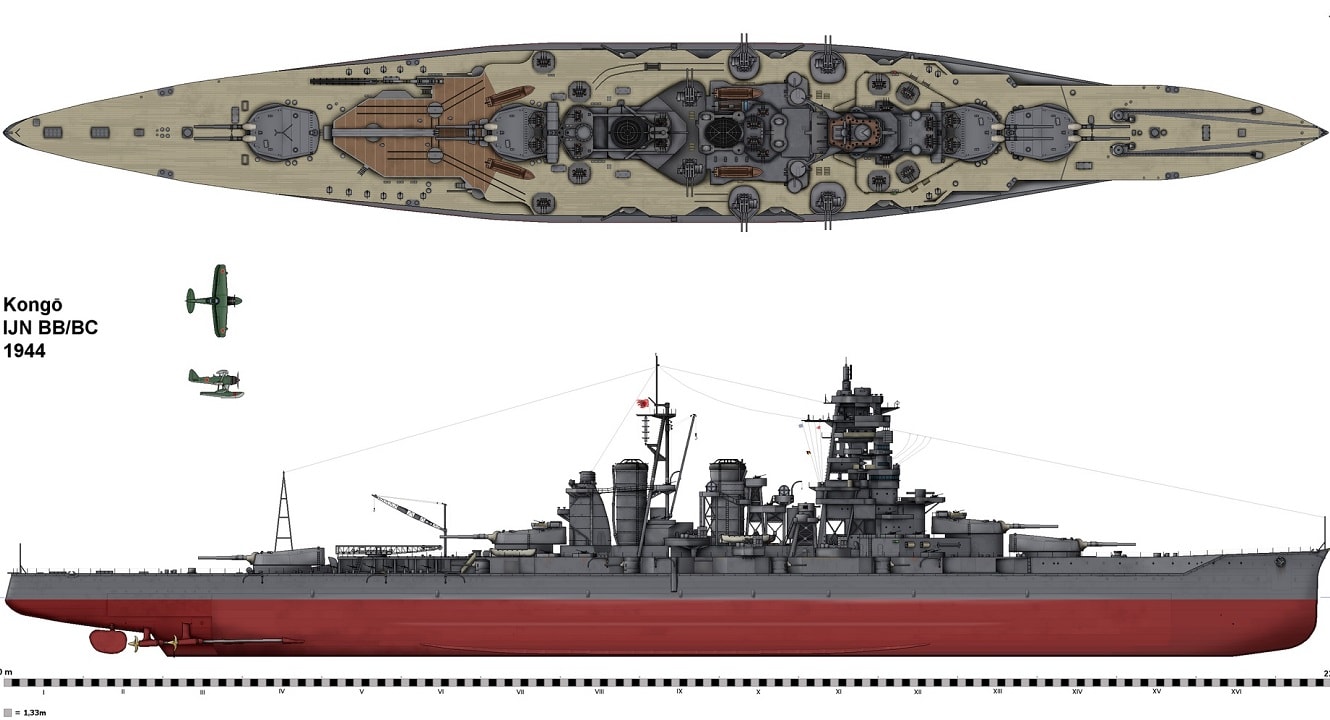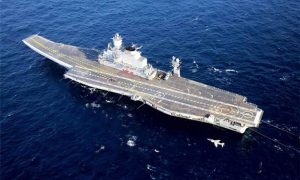Still, the USS Sealion was the first American submarine to sink a real battleship from the Axis.

A History of the USS Sealion U.S. Navy submarines, sometimes known as “the silent service,” played a crucial role in the Pacific Theater of Operations during World War Two by decimating Hideki Tojo’s merchant fleet and the warships of the Imperial Japanese Navy (IJN).
Regarding the latter category, American submarines successfully sank several aircraft carriers, including the 69,000-ton supercarrier Shinano, which was attacked by the USS Archerfish, commanded by Commodore Joseph F. Enright.
Shinano was the biggest ship that has ever been lost in the history of submarine warfare. She began her sad life as a battleship. She was a sister ship to the Yamato and Musashi, the two largest battleships in the world.
Yet, only one U.S. submarine succeeded in sinking a legitimate Axis battleship.
The USN Sealion II, a submarine, sank the IJN Kong. Let’s investigate this once-in-a-lifetime occurrence in maritime conflict.
USS Sealion II (SS 315) was also a Balao-class submarine, as the Archerfish mentioned above (named for the Balao halfbeak fish species, scientific name Hemiramphus bacalao). Her keel was laid on October 31, 1943 (Trick or Treat, Tojo!) by the illustrious Electric Boat Company of Groton, Connecticut, and she was commissioned on March 8, 1944.
She had ten 21-inch (533mm) torpedo tubes (six tubes forward and four tubes aft), a 5-inch (127mm)/25-caliber deck gun, and Bofors 40mm and Oerlikon 20mm anti-aircraft guns. Vice Admiral Charles A. Lockwood, Commander, Submarine Force Pacific Fleet (COMSUBPAC), wrote in his book Sink ‘Em All, “I did not want my submarines engaging in gunfights with planes…” about the latter two weapon systems. One might ask, “Why strengthen [our A.A. defenses] if we have no plans to employ them?”
The estimated length of the Sealion II was 311 feet, 9 inches (95.02 meters), and it is surface, and submerged displacements were 1,550 and 2,463 tonnes, respectively. She traveled with a top speed of 20.25 knots and a submerged speed of 8.75 knots when crossing the oceans. Its maiden war patrol began on June 8, 1944, and 20 days later, on July 8, 1944, the Japanese naval cargo ship Sansei Maru became her first victim.
The next year, on September 12, Sealion accidentally caused one of the worst “blue-on-blue” incidents of the war when she sank the Rakuy Maru and Kachidoki Maru. These ships carried 2,218 Australian and British prisoners of war, and 1,559 were killed.
Sealion II and the other American submarines could save about 150 of their fellow Americans; the IJN warships picked up and transported the remaining 500 to Japan.
Lt. Cmdr. Eli Thomas Reich, Class of 1935, U. S. Naval Academy, was the submarine’s skipper when she had her fateful brush with the battleship Kong.
The Kong was the flagship of the Kong class of battleships, the IJN’s most active capital ship class during World War II. The Kong was named after Mount Kong in Osaka Prefecture, not the African Congo. Kong and her two sisters, the Hiei and the Kirishima, combined tonnage was 36,601.
Four huge turrets, two in front and two in the rear, housed a total of eight 14-inch (356mm) main guns; furthermore, they carried sixteen 6-inch (152mm) guns, eight 3-inch (76mm) guns, and eight 21-inch (530mm) torpedo tubes. There was a belt of armor 8 inches (20.32 cm) thick, a deck plate of armor 2.75 inches (6.98 cm) thick, and a turret face plate of armor 9 inches (22.86 cm) thick. The biggest ironies of the history of this particular battlewagon are explained by my 1945 coworker Peter Suciu:
Sir George Thurston, a British naval engineer, developed the initial concept for “Kong.”She was built in Barrow-in-Furness, United Kingdom, by the Vickers Shipbuilding Company and was the last Japanese capital ship built outside of Japan. Japan had ordered the destroyer from the United Kingdom to learn from the experience of building a British vessel.
Vice Admiral Shimazaki Toshio, a 1916 graduate of the esteemed Naval Academy Etajima (Kaigun Heigakk), was in command of the Kong when she collided with Sealion II.
They decided on November 21, 1944, After escaping an American air strike on the tiny island of Brunei, Kong was traveling west of the Formosa Strait with Admiral Takeo Kurita’s First Strike Force on their way back to Japan.
Admiral Kurita thought a minefield that was impossible to get through from the northern tip of Formosa (modern-day Taiwan) to Honsh through the Ryukyu Islands would keep American submarines and surface warships away. Kurita trusted the minefield enough to tell his fleet not to zigzag, even though zigzagging is the standard operating procedure for deceiving enemy torpedoes and aerial bombs so that the ships could keep going straight at 17 knots and get back to port faster.
On the other hand, Lt. Cmdr. Reich and his team had other plans. Around 00:20 on the morning of the 21st, Sealion II made its first radar contact with the Japanese formation, having begun a war patrol in the East China Sea alongside the USS Kete 22 days previously.
Reich opened fire on the Kong with six Mark 18 electric “tin fish” at 02:46 and three Mark 18 electric “torps” at the battleship Nagato three minutes later. When three torpedoes hit the first battlewagon, two successfully penetrated the ship and flooded two boiler rooms on the port side. The strike was recorded by the submarine’s crew on a sound recorder left behind by a CBS war journalist, and it is likely the only audio recording of a submarine attack from World War Two that has survived to this day.
Nagato avoided the second volley by making a sharp turn. Still, the destroyer Urakaze was sacrificed when a torpedo hit the ship’s magazine, causing it to explode and sink in seconds with the loss of all hands.
At first, Reich believed that the only damage he had done to the Kong was to its heavy armor. The battleship’s flooding rapidly became uncontrollable, leaving the vessel unable to move. At 0524, the ship’s magazine exploded with a huge blow, and the ship quickly sank to a depth of 350 feet (110 meters). Her captain and the First Battleship Division’s Vice Adm. Matome Ugaki were killed, along with over 1,200 of their crew.
Commander Reich, proud to be Irish and Catholic, said, “Ah, the luck of the Irish!” in a happy tone.
For this extraordinary feat, Reich was awarded a third Navy Cross; he retired from the Navy in 1973 as a vice admiral. On November 30, 1999, at 86, Eli Thomas Reich passed away due to Alzheimer’s. His burial is in Arlington National Cemetery, Section 30, Grave 950-A. On October 10, 1945, Harry S. Truman awarded the entire crew of his beloved submarine the Presidential Unit Citation. The submarine was decommissioned for good on February 20, 1970, and sunk as a wreck near Newport on July 8, 1978.






